Quick link:
用、法子、給/给、東西/东西、本來/本来、事情、主意、馬上/马上、現在/现在、請進/请进、以後/以后、不錯/不错、買菜/买菜、餓/饿、打算、那是什麼/那是什么、更好、下次、去哪兒/去哪儿、米飯/米饭、沒有/没有、宿舍、午飯/午饭、準時/准时、喝、咖啡、一點兒/一点儿、泡茶、行、請坐/请坐
用: yòng; use
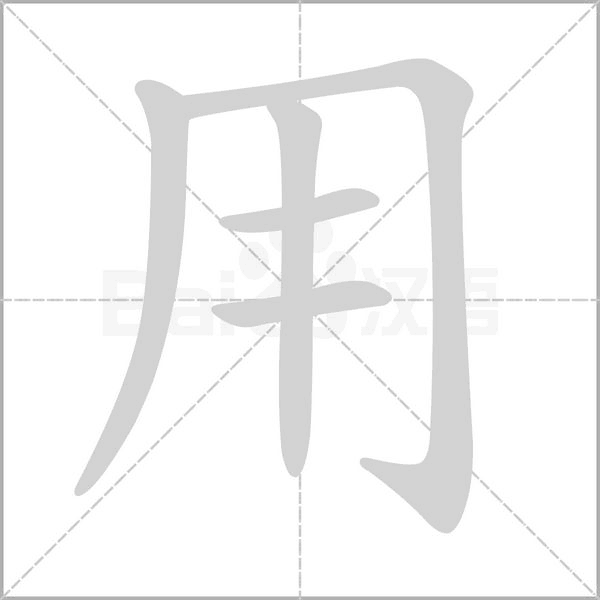
yòng: use
radical: 用

Chinese Studies Classroom: The character “用” in Shang Dynasty Oracle Bone Script was written in the shape of a bucket. Since a bucket can be used, its form was borrowed to convey the meaning of “to use.”
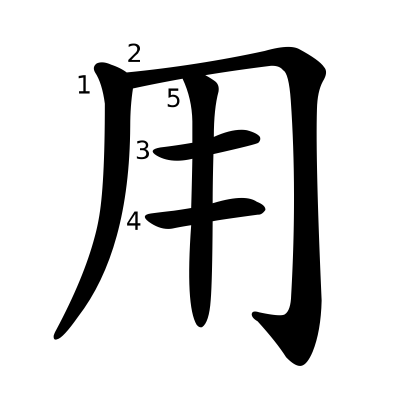
Both traditional and simplified characters are written like this.
法子: fázizi; method (a colloquial expression)
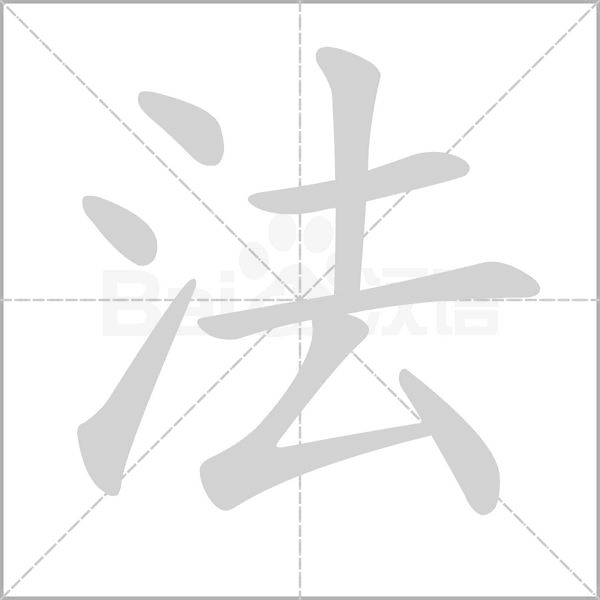
fǎ: law; way; method
radical: 氵(shuǐ; water)
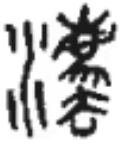
Chinese Studies Classroom: In ancient Chinese script, the character “法” was written as “灋.” This form consists of three components: “氵” (shuǐ; water), “廌” (zhì; a mythical creature), and “去” (qù; to remove). The “氵” symbolizes fairness and impartiality in law enforcement, akin to the evenness of a water surface. “廌” refers to a mythical creature in Chinese folklore, known for its single horn and unwavering sense of justice. Legend has it that this creature would use its horn to strike the guilty party in disputes, making it a symbol of integrity and fairness. The “去” component is interpreted as the removal of wrongdoers, reinforcing the concept of justice. Today, both the traditional and simplified forms of the character are written as “法.”
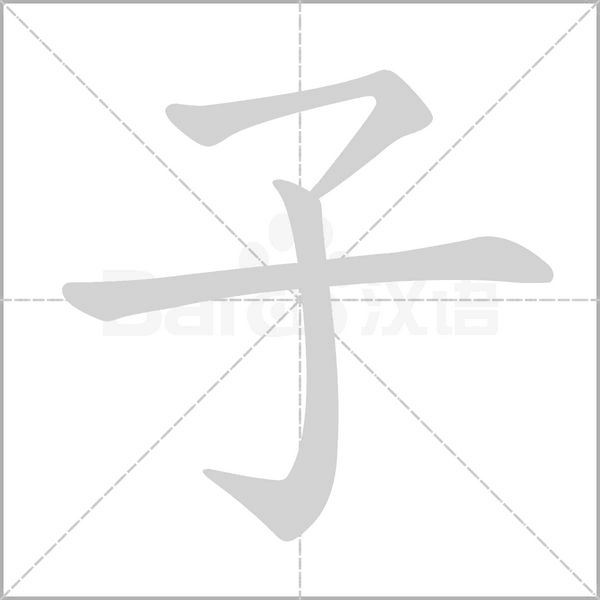
zi: a word suffix with no actual meaning in this context
radical: 子
Both traditional and simplified characters are written as:

給: gěi; (v.) to give; (prep.) for
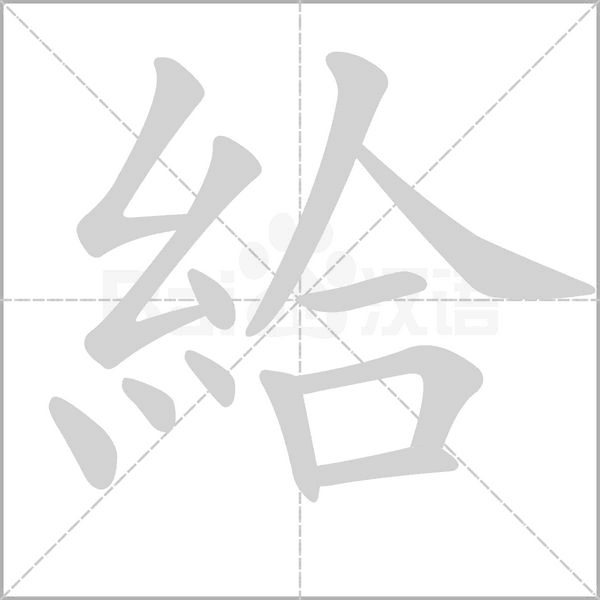
gěi: (v.) to give; (prep.) for
radical: 糸 (sī; a bundle of silk)
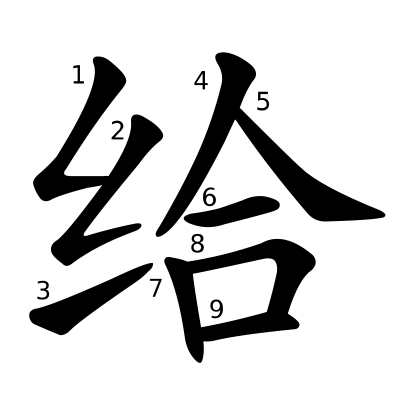
This is the simplified character form.
東西: dōngxi; thing. “東西” can mean both “east and west” and “things.” One explanation is that in ancient markets, goods were often transported from the east or west, so “東西” came to refer to items or goods. This usage evolved into the modern term for both concrete and abstract things. It is important to note that when “東西” refers to “thing,” the character “西” is pronounced in the neutral tone, “xi.”
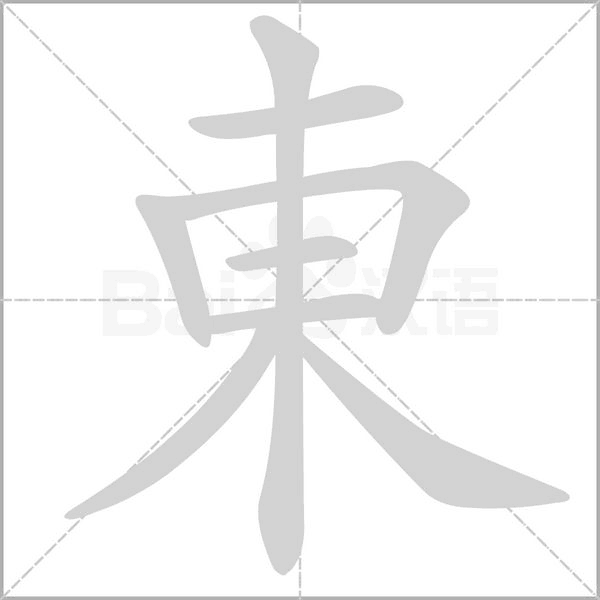
dōng: east
radical: 一

Chinese Studies Classroom: One interpretation of this character is that “東” looks like the sun (日) rising among trees (木), symbolizing the sun just rising. The direction where the sun rises is the east.
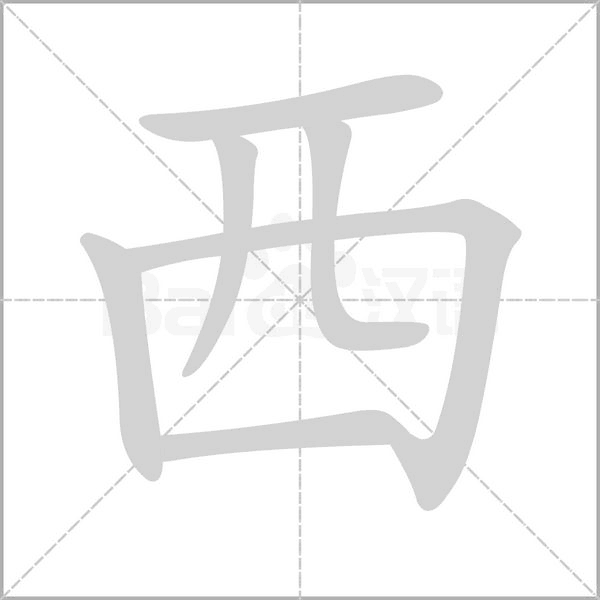
xī: west
radical: 西

Chinese Studies Classroom: The ancient form of the character “西” resembles a bird’s nest. When the sun sets, birds return to their nests, so the character “西” is used to represent the direction of the sunset, i.e., the west.
Simplified character:

本來: běnlái; original; originally
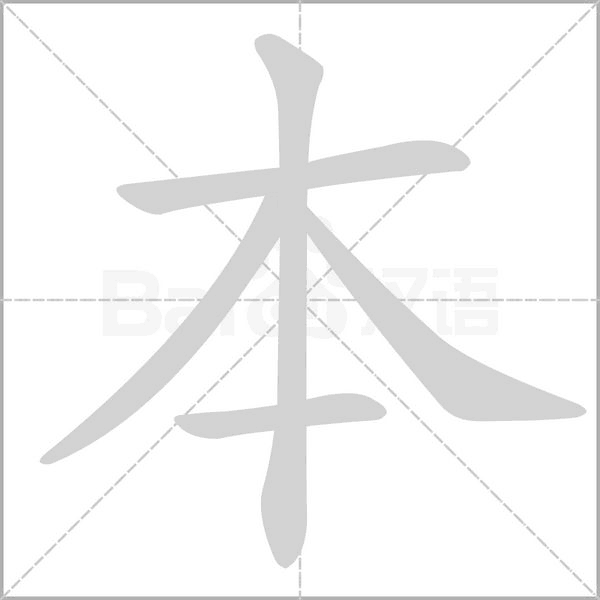
běn: stem or root of plants; foundation; origin; basis
radical: 一

Chinese Studies Classroom: In ancient script, the character “本” originally depicted a tree with a short horizontal line beneath it, symbolizing the position of the tree’s roots. Therefore, its original meaning referred to the roots of a tree. Later, it came to metaphorically represent fundamental or essential things, and eventually extended to meanings such as “main,” “original,” or “primary.”
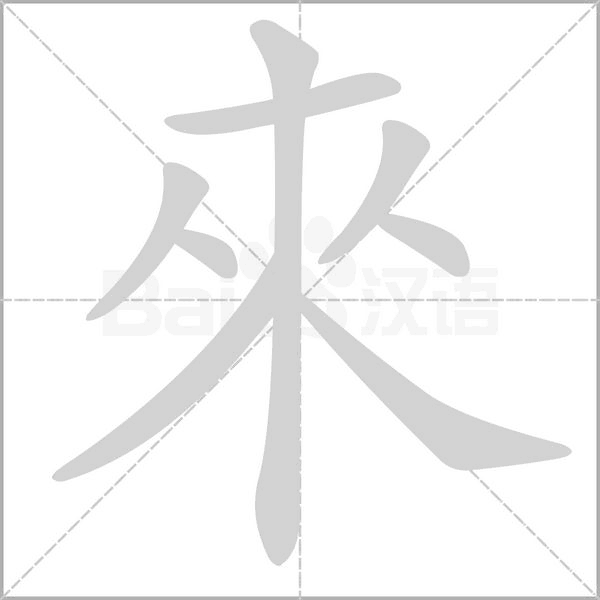
lái: come
radical: 木 (mù; wood)
Traditional character:

Simplified character:

事情: shìqing; affair; matter; thing; business
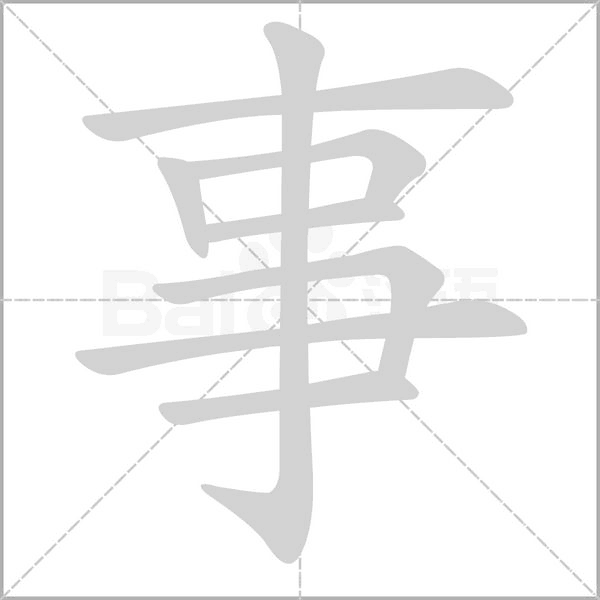
shì: matter; affair, thing; business
radical: 亅

Chinese Studies Classroom: In Oracle Bone Script from the Shang Dynasty, the character “事” depicted a hand holding a hunting tool at the bottom, symbolizing the act of engaging in an activity. Its original meaning was “to do” or “to engage in.” Over time, it evolved to represent meanings such as “affairs” and “career.”
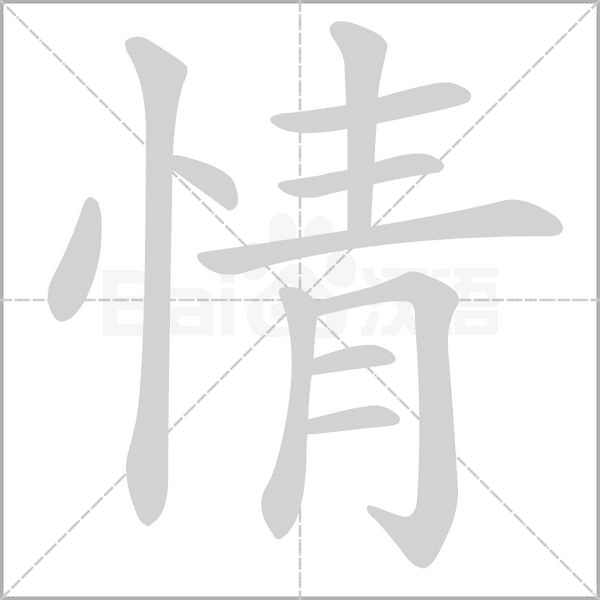
qíng: feeling; sentiment; situation; circumstances; condition
Both traditional and simplified characters are written as:
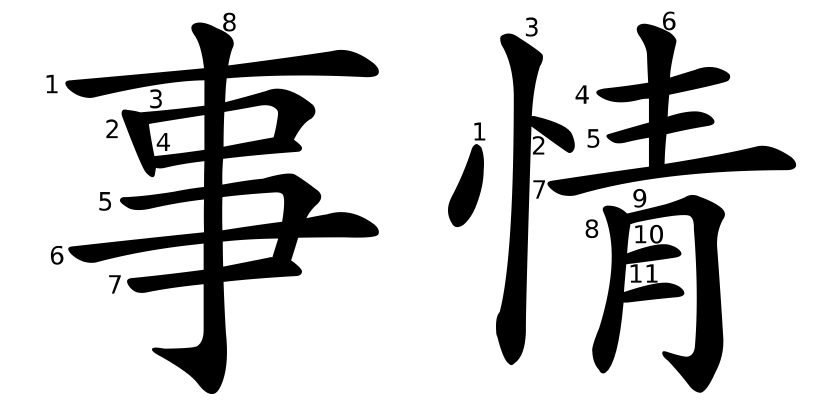
主意: zhúyi; idea
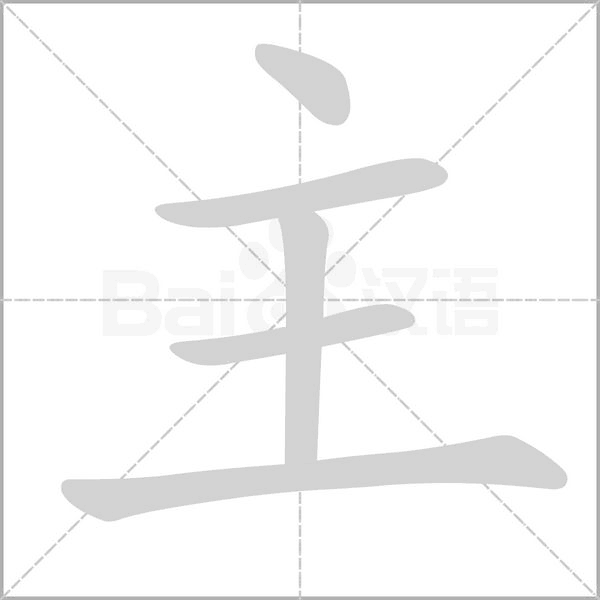
zhǔ: main
radical: 丶

Chinese Studies Classroom: In ancient characters, “主” resembled a lamp with a flame inside. For a lamp, the flame is the most essential part, which led to the meaning of “fundamental” or “prominent.” Over time, this evolved to represent meanings such as “ruler,” “master,” or “host.”
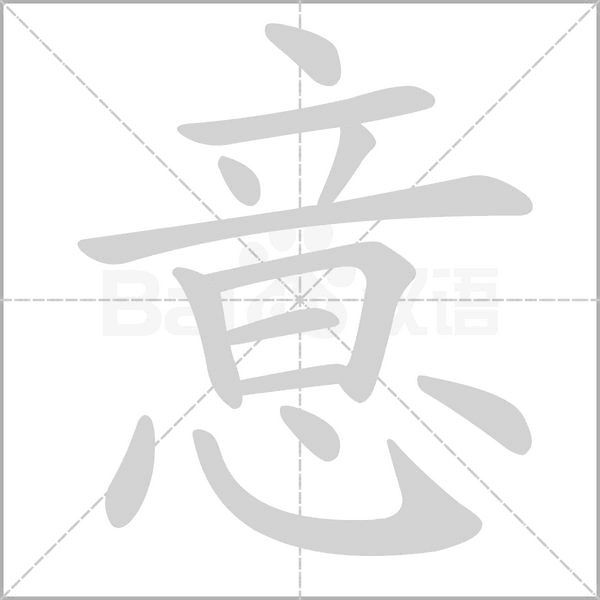
yì: meaning; idea; intention
radical: 心 (xīn; heart)
Both traditional and simplified characters are written as:
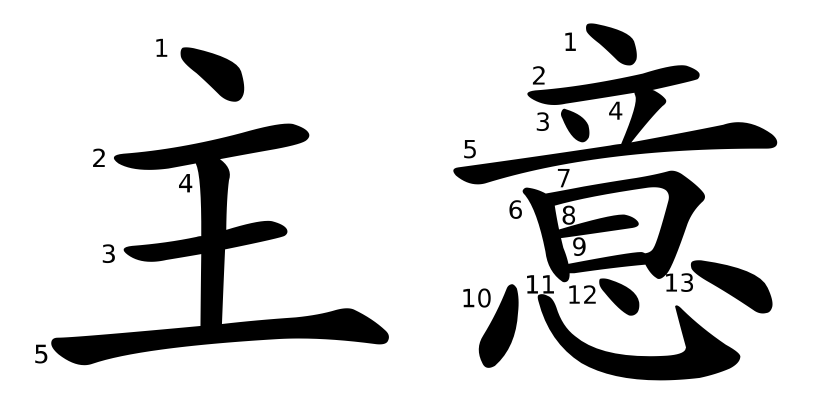
馬上: mǎshàng; right away

mǎ: horse
radical: 馬
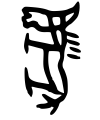
Chinese Studies Classroom: “馬” is a pictographic character. In Oracle Bone Script, “馬” resembles a side view of a horse.

shàng: go up
radical: 一 (yī)
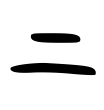
Chinese Studies Classroom: In Oracle Bone Script, the character “上” consists of a long horizontal line representing a baseline and a short horizontal line above it, indicating a position above the baseline. Thus, the original meaning of “上” is “high” or “above.” By extension, it refers to higher ranks or superior quality. It can also function as a verb, meaning to ascend, move upward, or advance.
Traditional character:
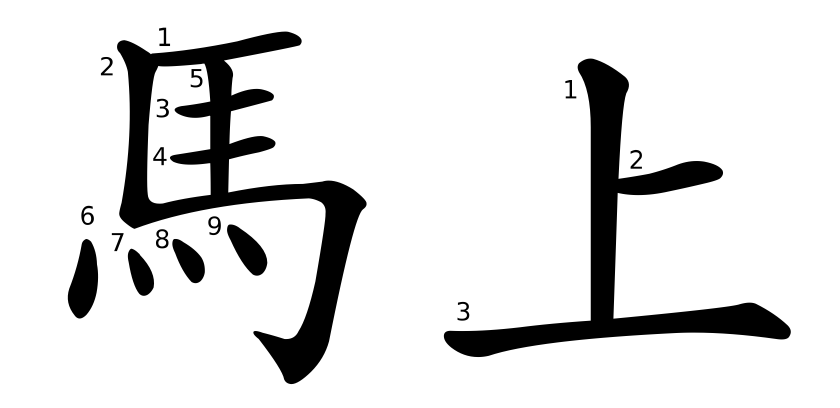
Simplified character:
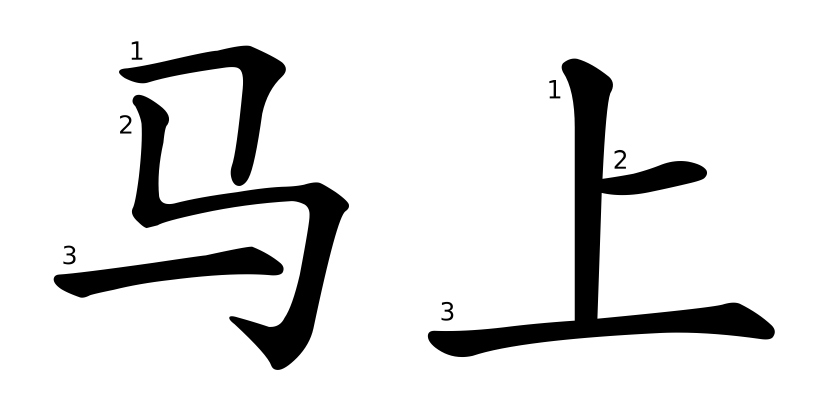
現在: xiànzài; now
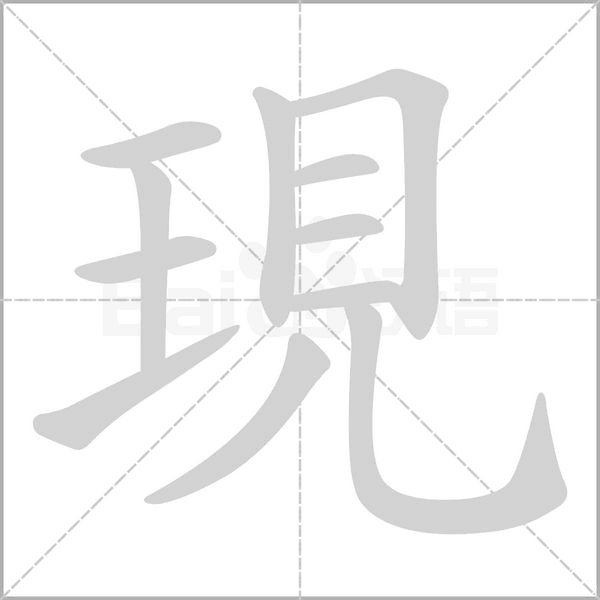
xiàn: now
radical: 王

zài: (v.) stay; remain; (adv.) in process of; (prep.) in
radical: 土 (tǔ; soil; earth)
Traditional character:
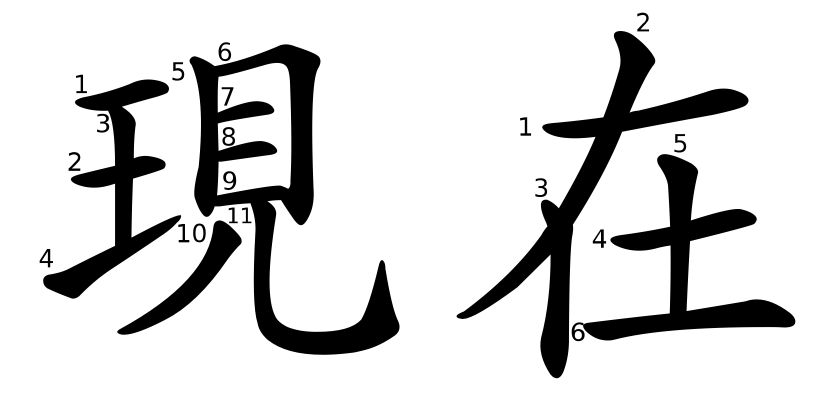
Simplified character:
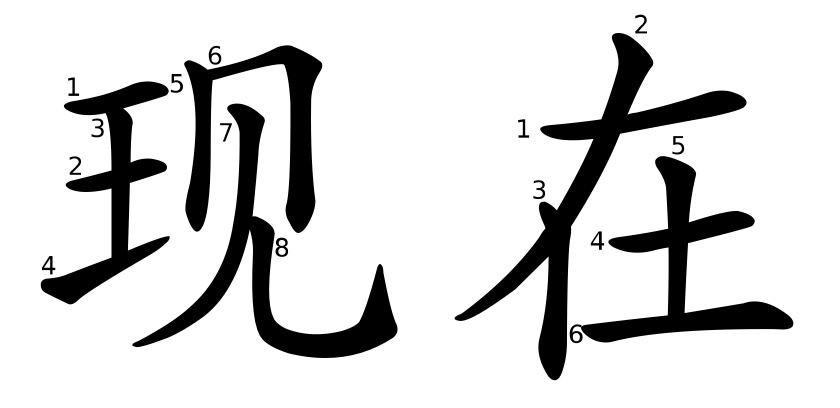
請進: qǐngjìn; Please come in

qǐng: please; invite
radical: 言 (yán; language)
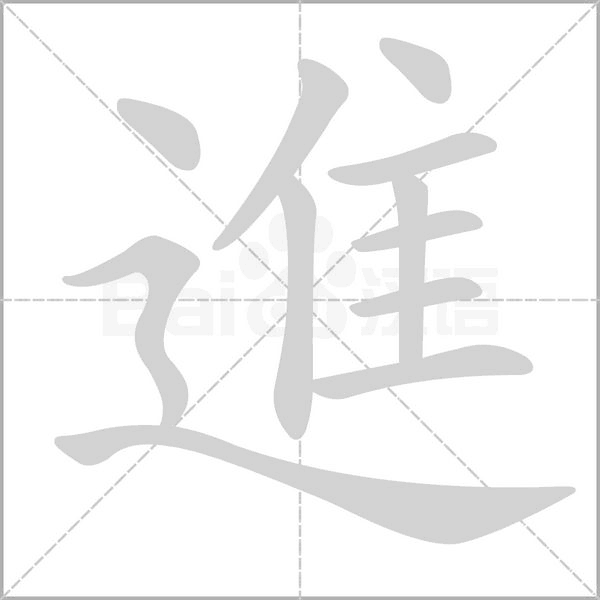
jìn: enter
radical: 辶 (chuò,walking)

Chinese Studies Classroom: The “辶” radical, also known as “chuò” or “walking” radical, is associated with movement, walking, or travel. It is a simplified form of the character “辵,” which depicts a combination of “止” (a foot or stop) and a repeated “彳” (a step or walking action). When this radical appears in characters, it often conveys meanings related to movement, direction, paths, or travel. For example, 進/进 (jìn, to enter), 遠/远 (yuǎn, far), 送 (sòng, to send) or 道 (dào, path, way)
Simplified character:
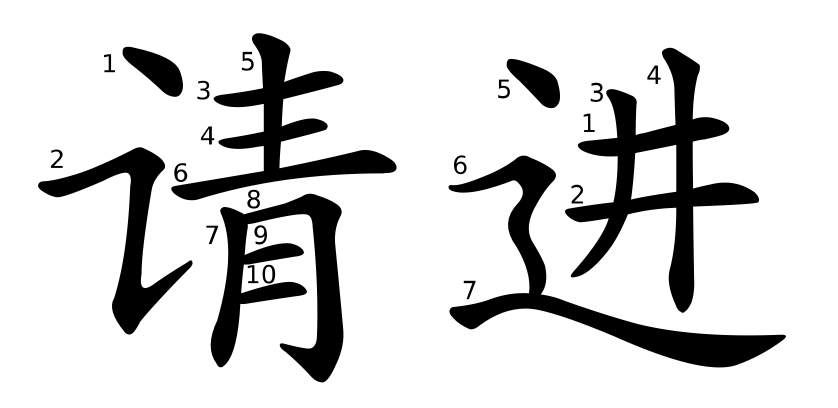
以後: yǐhòu; after; later on; afterwards; in the future
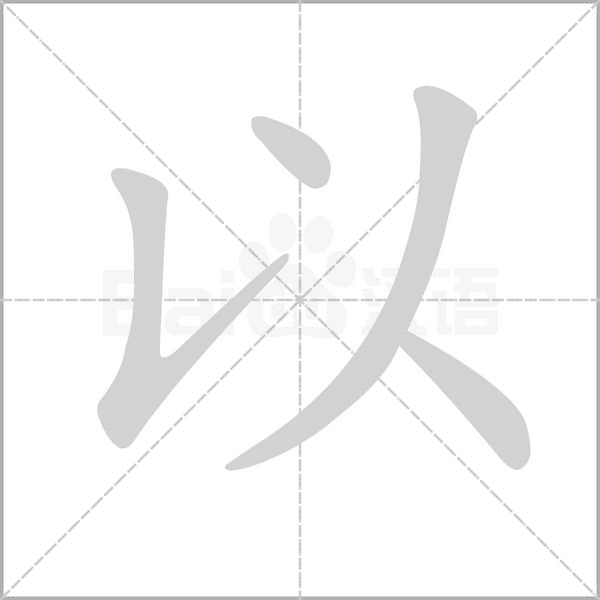
yǐ
radical: 人 (rén; person)
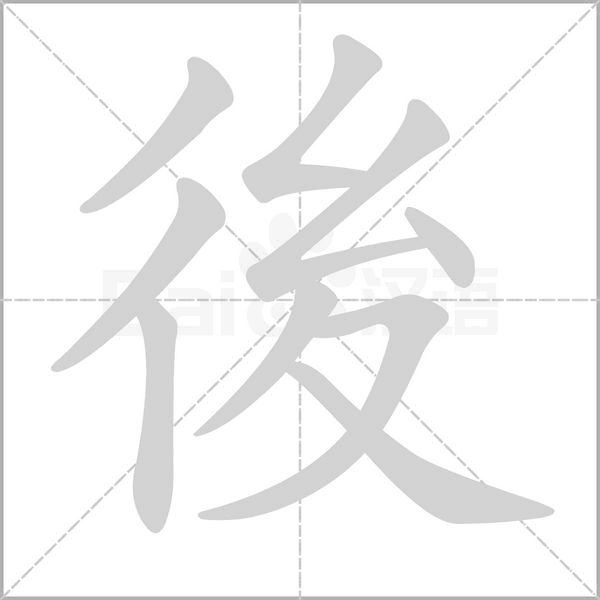
hòu: behind; back; after; later
radical: 彳 (chì; the appearance of walking slowly)
Traditional character:
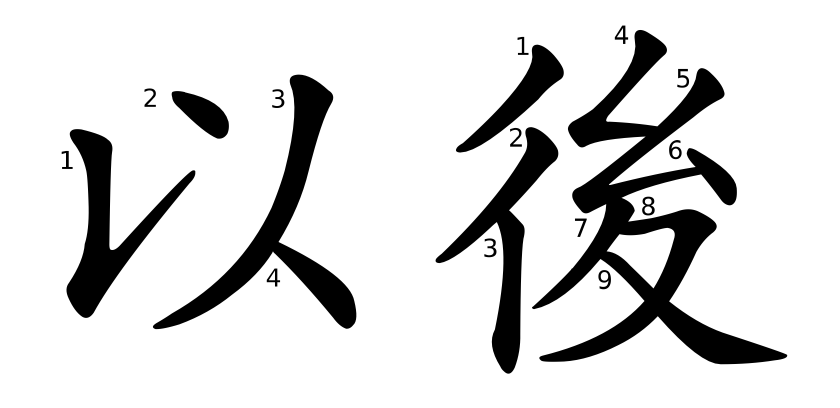
Simplified character:
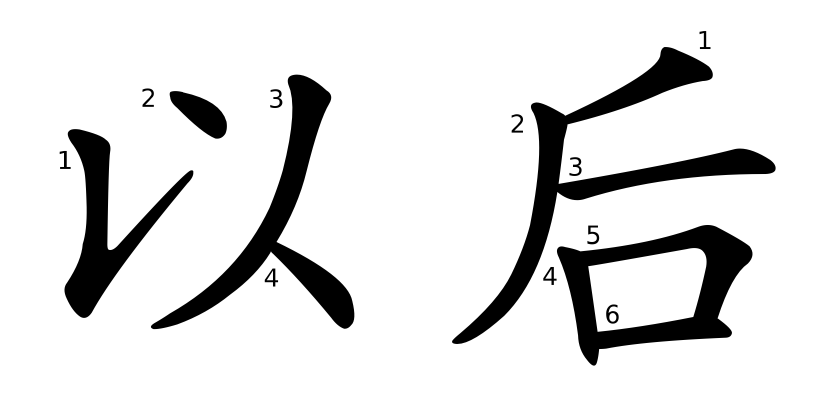
不錯: búcuò; pretty good; not bad

bù: no; not; don’t
radical: 不
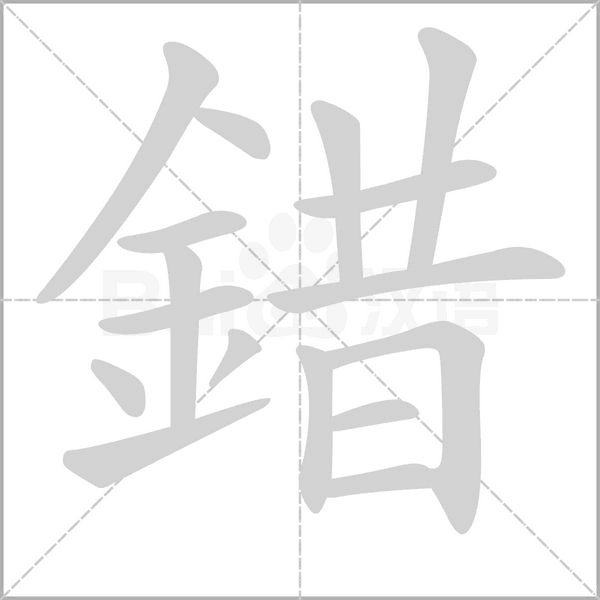
cuò: wrong
radical: 金 (jīn; metal)
Simplified character:
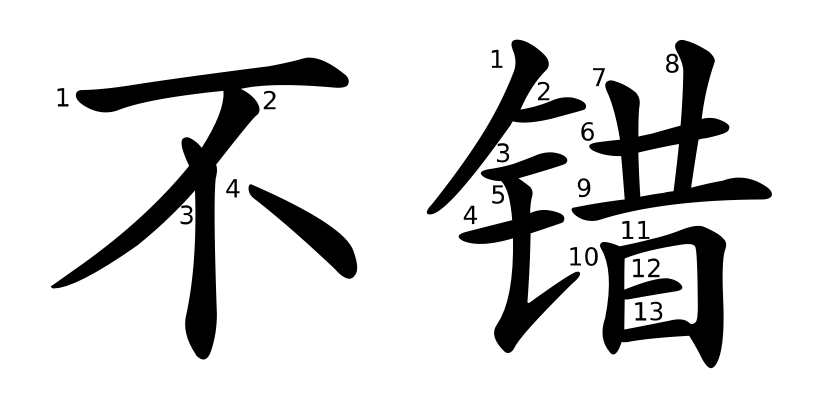
買菜: mǎicài; buy vegetables; grocery shopping
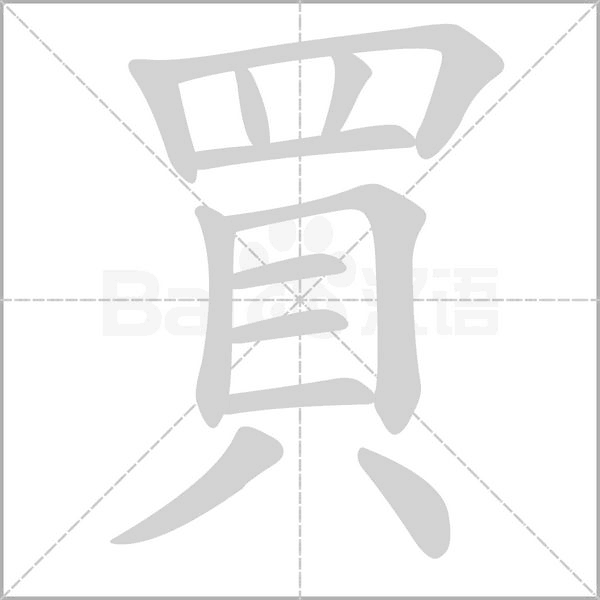
mǎi: to buy
radical: 貝 (bèi; shell; money)

Chinese Studies Classroom: In Oracle Bone Script, the character “買” (mǎi) is composed of two parts: the top element is “网” (wǎng; net), and the bottom is “貝” (bèi; shell). In ancient times, shells were used as currency and considered valuable items. Thus, the original meaning of “買” was to use a large net to gather wealth, symbolizing commercial transactions. Before the Han Dynasty, “買” encompassed both the meanings of buying and selling. However, during the Han Dynasty, its meaning became more specific, referring exclusively to “buying.” To indicate “selling,” the character was modified by adding “出” (out) to the top, forming “賣/卖” (mài).

cài: vegetable
radical: 艹 (cǎo; grass or the general term for herbaceous plants)
Simplified character:
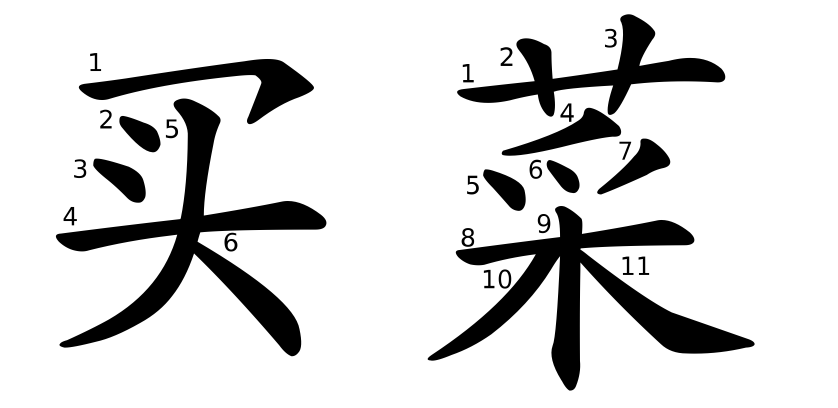
餓: è; hungry
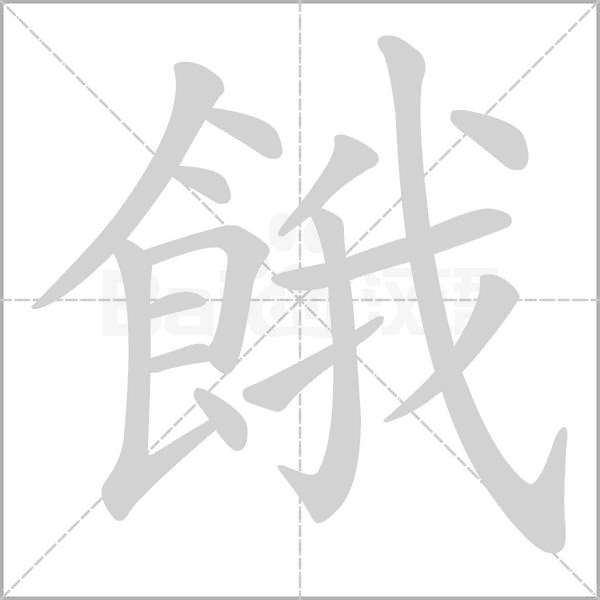
è: hungry
radical: 食 (shí; food)

The character “餓” (è, meaning “hungry”) is a phono-semantic compound. In Oracle Bone Script, the left component “食” represents food, with the lower part resembling a container filled with food and the upper part resembling a lid. The right component “我” serves as the phonetic indicator, as the ancient pronunciations of “餓” and “我” were similar. Characters with the “食” radical are often related to food, such as “餓” (è; hungry), “飯” (fàn; rice/meal), and “館” (guǎn; restaurant).
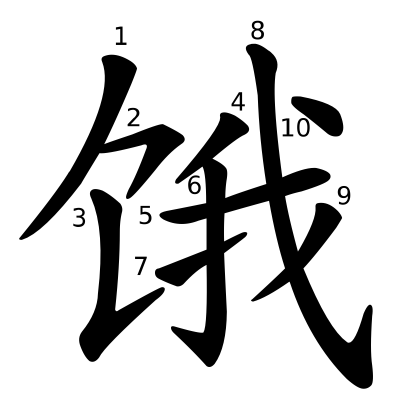
This is the simplified character form.
打算: dǎsuàn; plan; intend
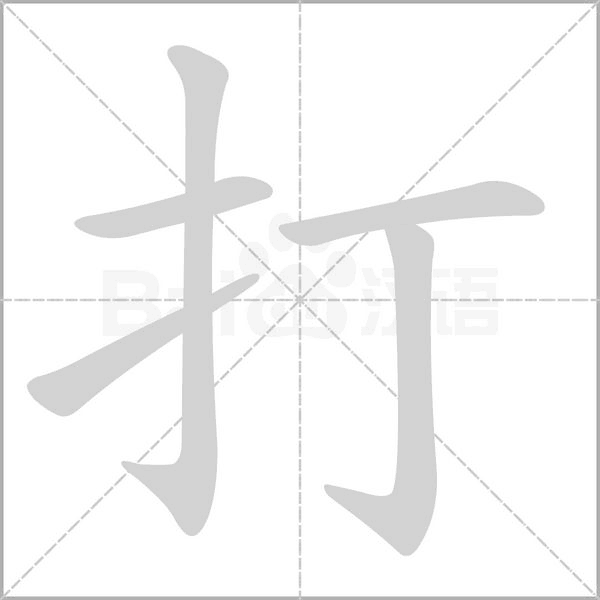
dǎ: strike; hit; knock; make
radical: 扌(shǒu; hand)

suàn: calculate
radical: 竹 (zhú; bamboo)
Both traditional and simplified characters are written as:
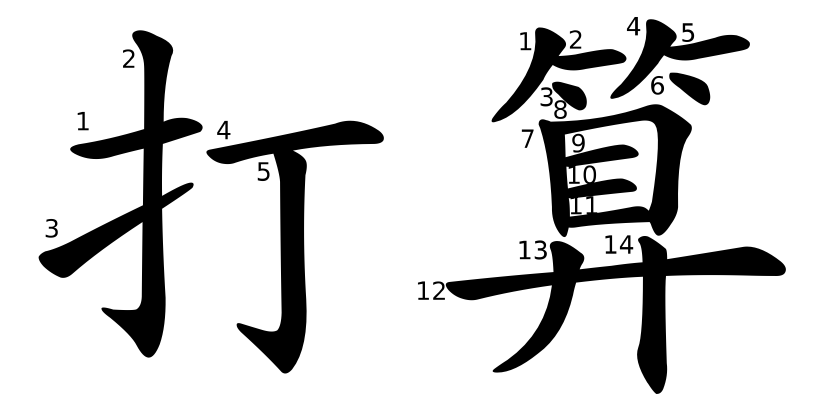
那是什麼: nà shì shénme; What’s that

nà: that
radical: 阝(yì; a small town)

Chinese Studies Classroom: The radical “阝” can appear on either the left or the right side of a Chinese character. When it is on the right side, it is derived from the character “邑” (yì), which is associated with cities. The original meaning of “那” was a place name, and it later extended to mean the pronoun “that.”
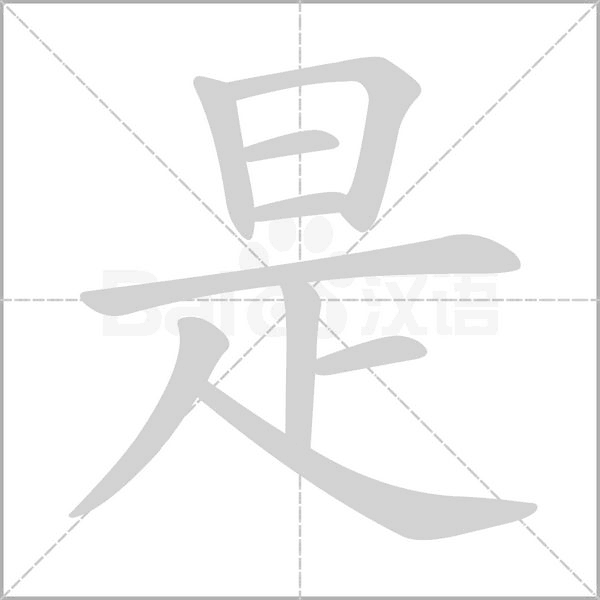
shì: be; is; are
radical: 日 (rì, sun)

Chinese Studies Classroom: One explanation is that in the Bronze Script, the character “是” consists of a sundial on top and the character “正” (upright) below, with the basic meaning of upright and not skewed. It later extended to mean correctness and further evolved into a response word, expressing agreement or approval. After the Han dynasty, “是” was used as a copula to indicate judgment.
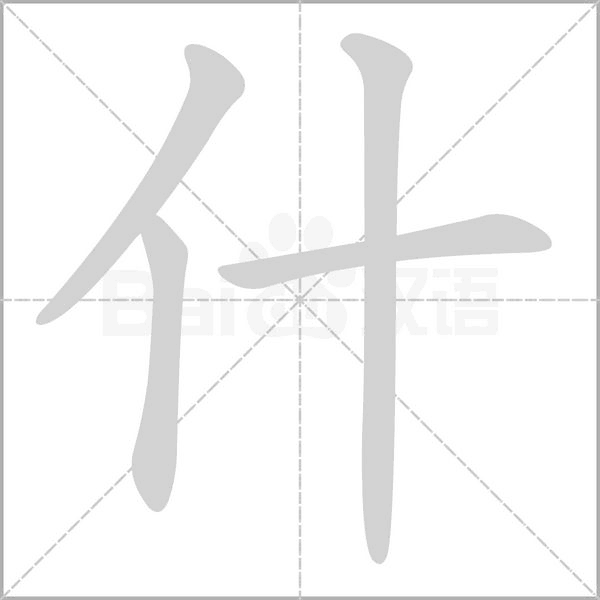
shén: interrogative pronoun, when used with “麼/么,” can express the meaning of “what.”
radical: 亻(rén, person)
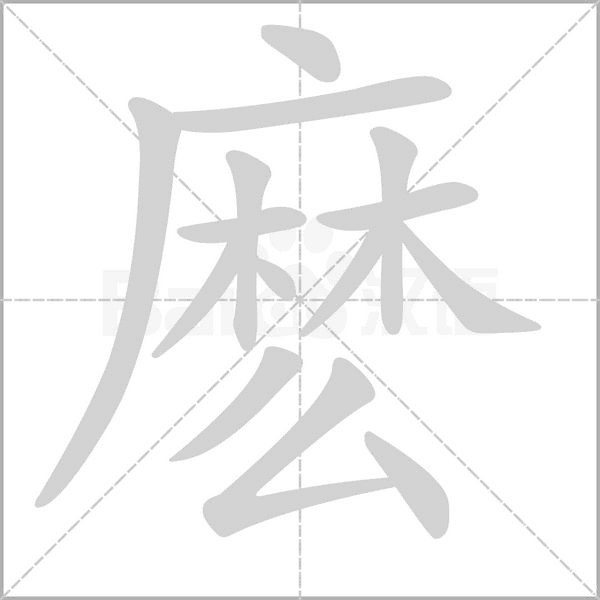
mo: suffix, when combined with “什” to form “什麼,” can express the meaning of “what.” The original meaning refers to small or tiny. Later, it evolved into a modal particle.
radical: 广. Characters with “广” as a semantic component are mostly related to buildings or places, such as 庭 (courtyard), 店 (shop) and 库 (storehouse)
Traditional character:

Simplified character:

更好: gènghǎo; better; so much the better
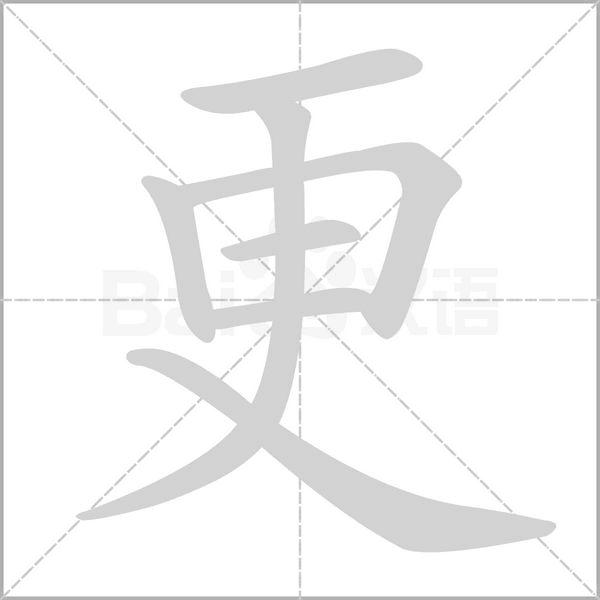
gèng: more; further
radical: 一

hǎo: good; nice; kind
radical: 女 (nǚ; female)

Chinese Studies Classroom: In oracle bone script, the left side of “好” is “女,” which can represent a woman or a mother, and the right side is “子,” which can represent a child or a male. One interpretation is that in matrilineal societies, women were highly respected, partly due to their ability to bear and raise children. The meaning of “好” as “good” or “beautiful” likely stems from this association with women’s role in reproduction and child-rearing. In ancient times, the act of women giving birth and raising children was regarded as a virtue, which led to the extension of the meaning of “good” or “beautiful.”
Both traditional and simplified characters are written as:
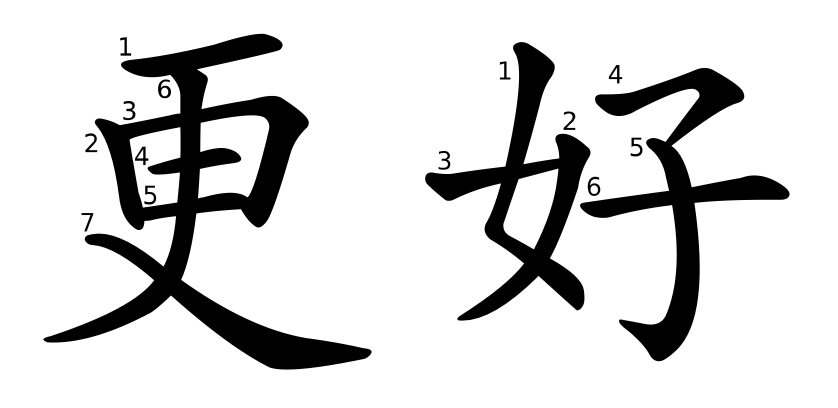
下次: xiàcì; next time
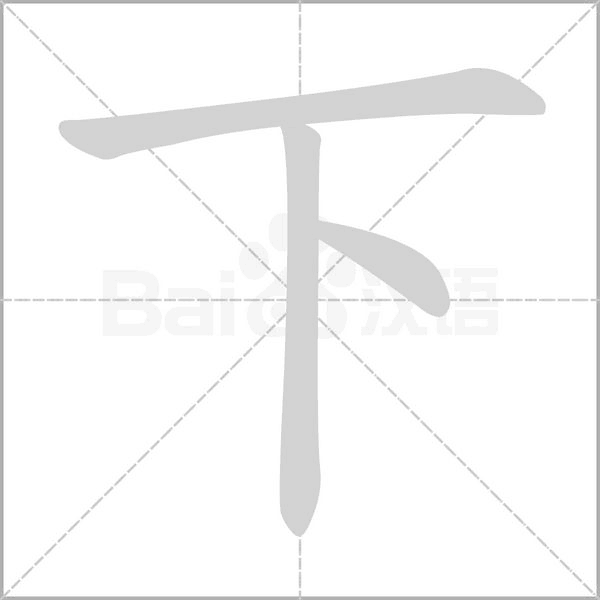
xià: below; down; under; lower; next
radical: 一
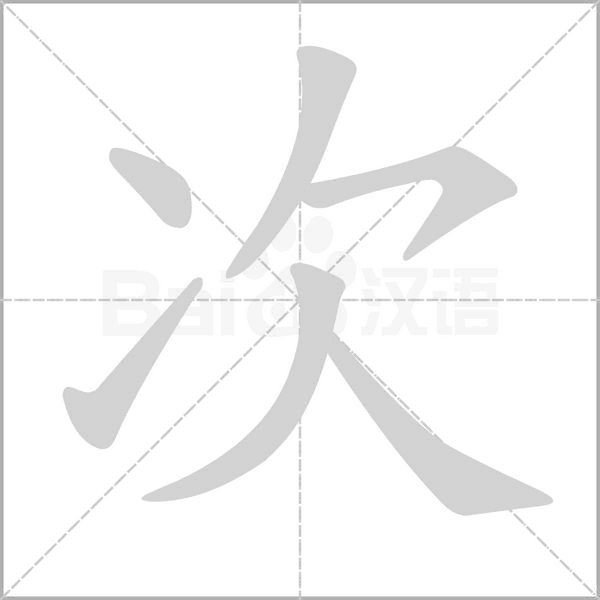
cì: sequence; second; next; inferior; a measure word used for actions that can be repeated, such as “一次” (yícì; one time) and “兩次” (liǎng; two times).
radical: 欠
Both traditional and simplified characters are written as:
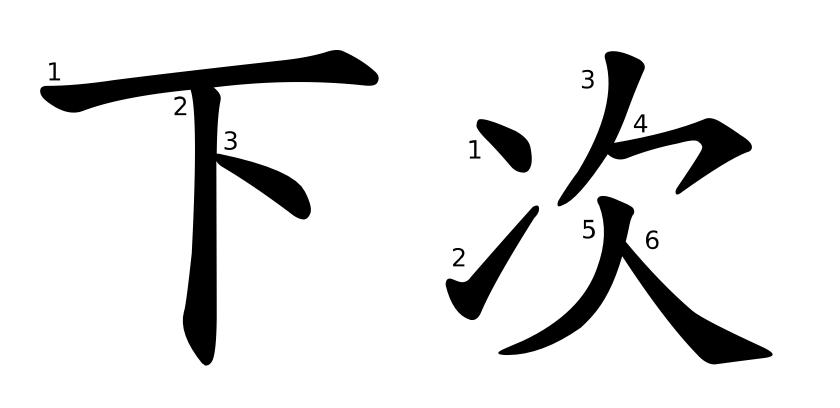
去哪兒: qùnǎr; Where to go
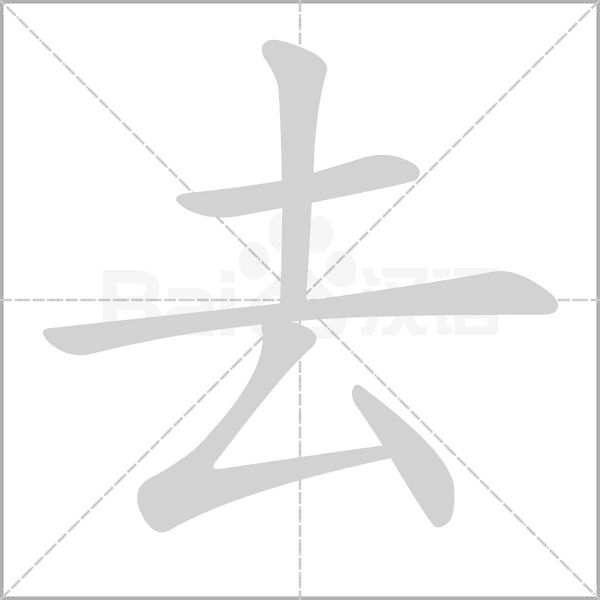
qù: to go
radical: 土
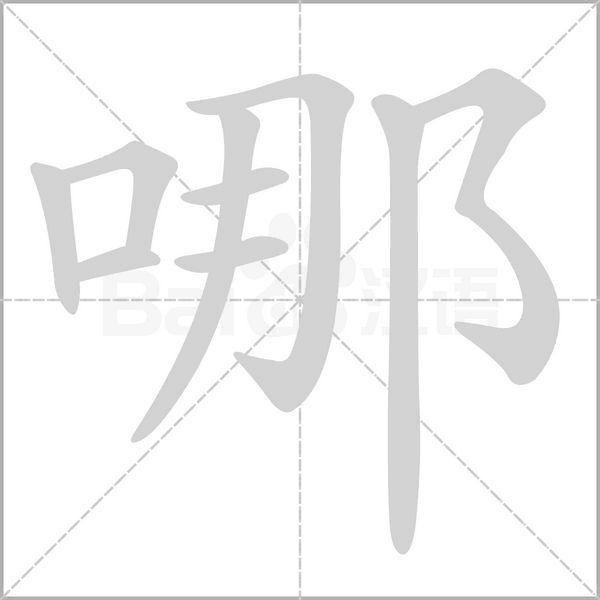
nǎ: which
radical: 口 (kǒu; mouth)
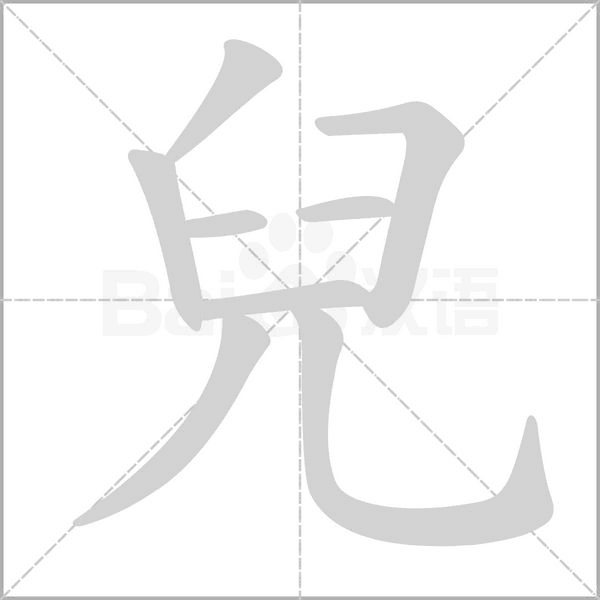
ér: a retroflex suffix
radical: 兒
Note that “兒” is an important retroflex suffix in Mandarin Chinese. In Mandarin Chinese, “érhuà” (the addition of the retroflex suffix “-r”) can add a sense of intimacy or diminutiveness to nouns. However, this usage is limited to certain specific words. For example, “画儿” (huàr) conveys a more casual or affectionate tone than “画” (huà), and “玩儿” (wánr) sounds more colloquial than “玩” (wán). In addition, “érhuà” can also change the meaning of certain words. For example: “哪” (nǎ; which) becomes “哪儿” (nǎr; where), and “那” (nà; that) becomes “那儿” (nàr; there).
Simplified character:

米飯: mǐfàn; rice
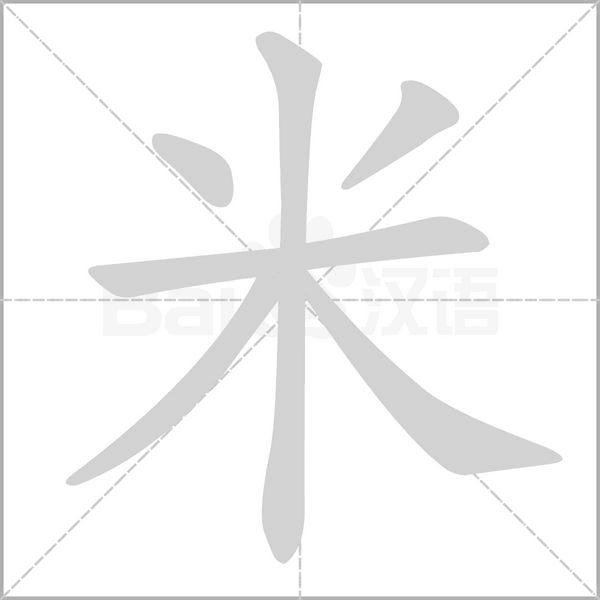
mǐ: rice
radical: 米
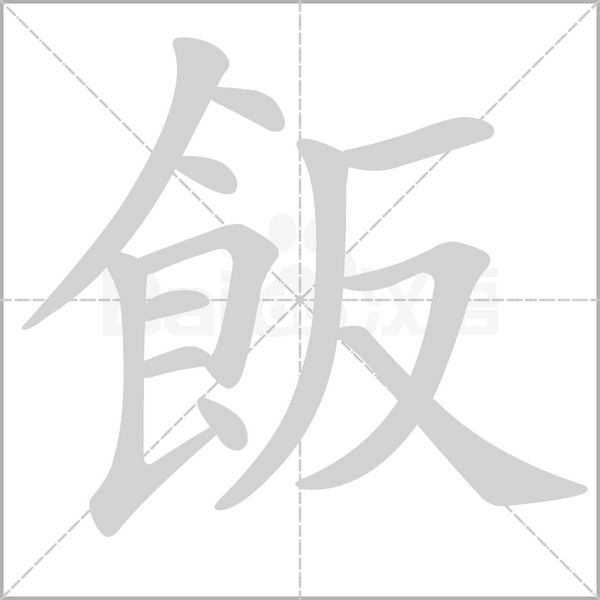
fàn: meal
radical: 食 (shí; food)

Chinese Studies Classroom: In Oracle Bone Script, the left component “食” represents food, with the lower part resembling a container filled with food and the upper part resembling a lid. The right component “反” serves as the phonetic indicator, as the ancient pronunciations of “飯” and “反” were similar. Characters with the “食” radical are often related to food, such as “餓” (è; hungry), “飯” (fàn; rice/meal), and “館” (guǎn; restaurant).
Simplified character:
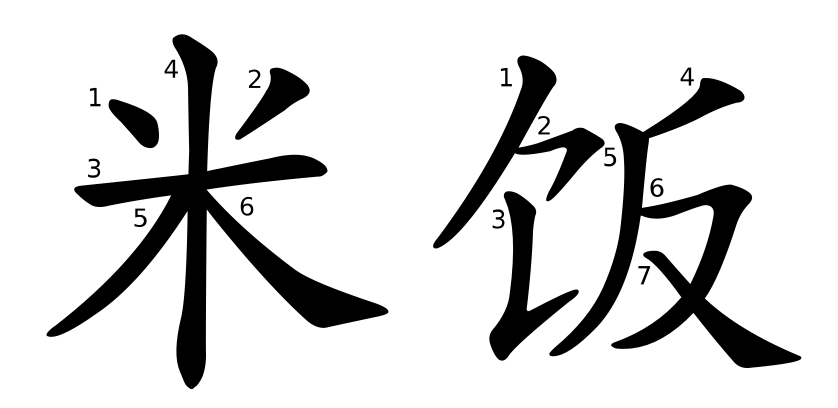
沒有: méiyǒu; not have; there is not
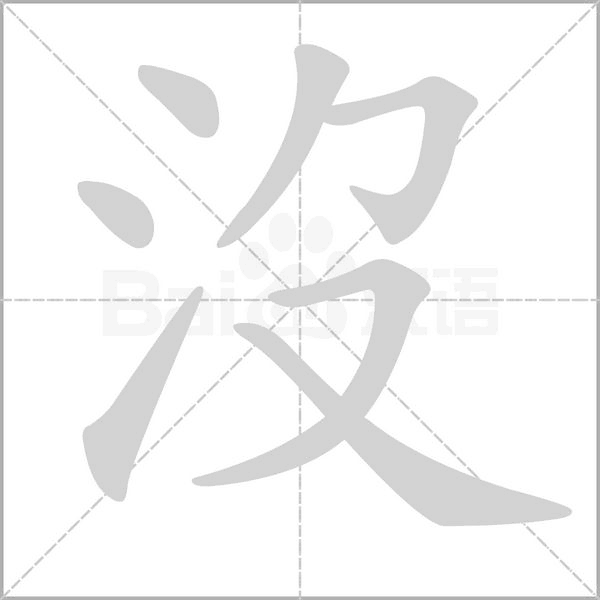
méi: not have; there is not; no; not
radical: 氵(shuǐ; water)
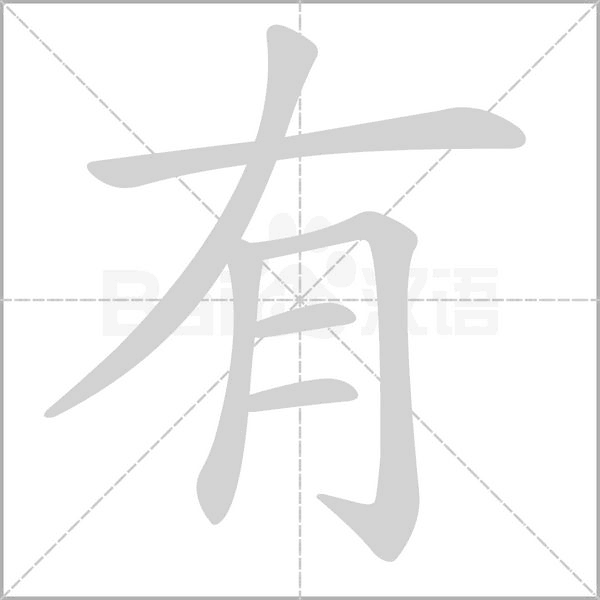
yǒu: to have
radical: 月 (yuè, flesh)

Chinese Studies Classroom: In Western Zhou Bronze Script, the upper right part of the character “有” represents a hand, while the lower left part depicts a piece of meat, resembling the cross-section of meat. It signifies having meat in hand, meaning “having“ food.
Traditional character:
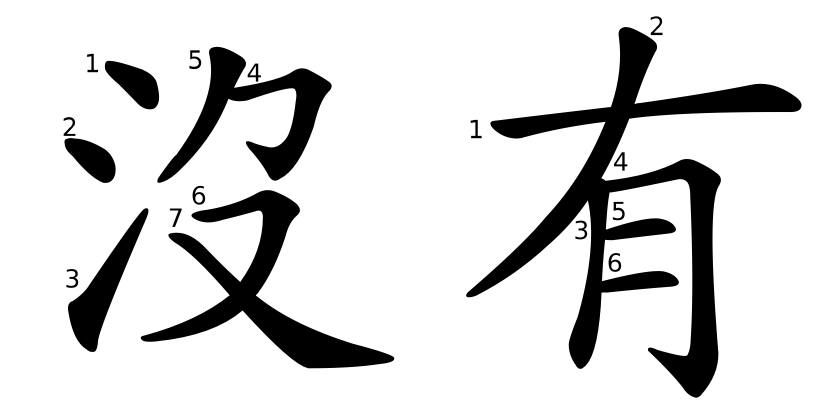
Simplified character:
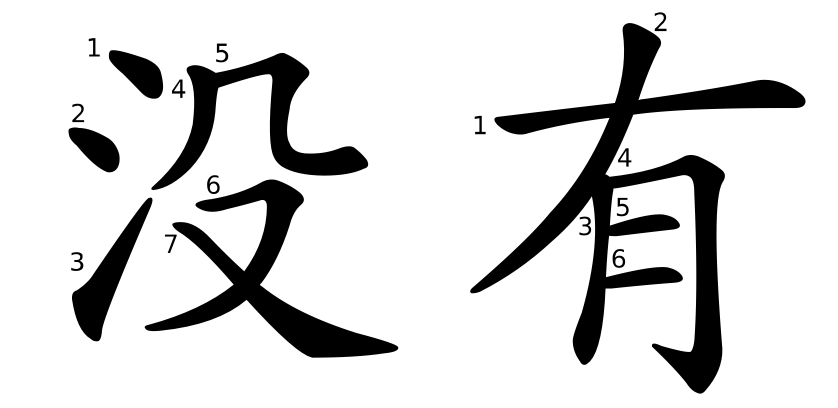
宿舍: sùshè; dorm

sù: lodge for the night; stay overnight
radical: 宀 (mián; roof)
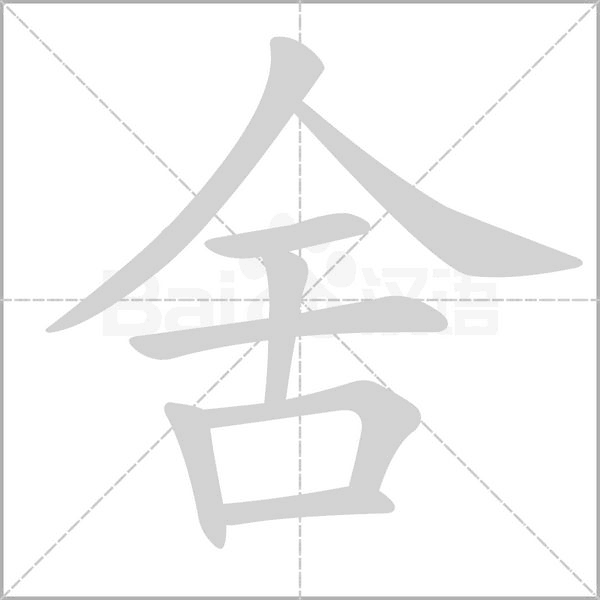
shè: house; hut
radical: 人

Chinese Studies Classroom: The ancient form of the character “舍” resembles a simple house. The two slanted lines at the top represent the roof, while the horizontal line in the middle symbolizes the roof beam. The vertical line beneath it represents a supporting pillar, and the slanted lines on either side depict braces holding up the beam. The “口” at the bottom represents a room. Together, the character depicts a room under a roof beam, conveying its original meaning: a temporary lodging for travelers, also known as an inn or guesthouse. Over time, the meaning of “舍” extended to include dormitories.
Both traditional and simplified characters are written as:
.png)
午飯: wǔfàn; lunch

wǔ: noon; midday
radical: ノ
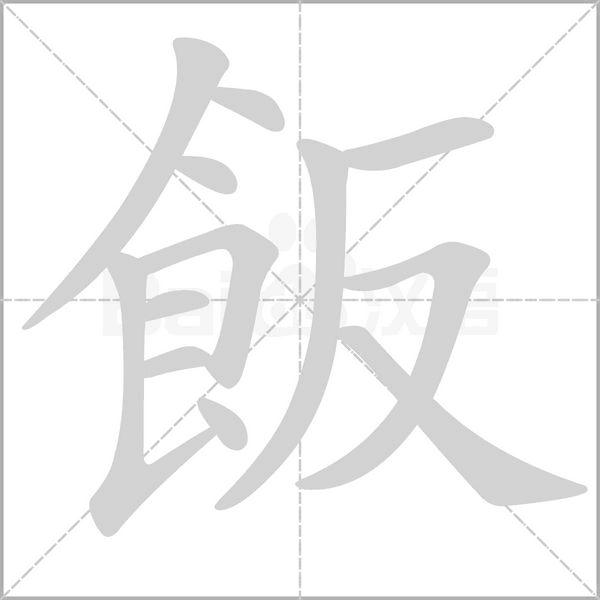
fàn: meal
radical: 食 (shí; food)

Chinese Studies Classroom: In Oracle Bone Script, the left component “食” represents food, with the lower part resembling a container filled with food and the upper part resembling a lid. The right component “反” serves as the phonetic indicator, as the ancient pronunciations of “飯” and “反” were similar. Characters with the “食” radical are often related to food, such as “餓” (è; hungry), “飯” (fàn; rice/meal), and “館” (guǎn; restaurant).
Simplified character:

準時: zhǔnshí; punctual; on time; on schedule

zhǔn: accurate; exact; precise; standard; norm
radical: 氵(shuǐ; water)
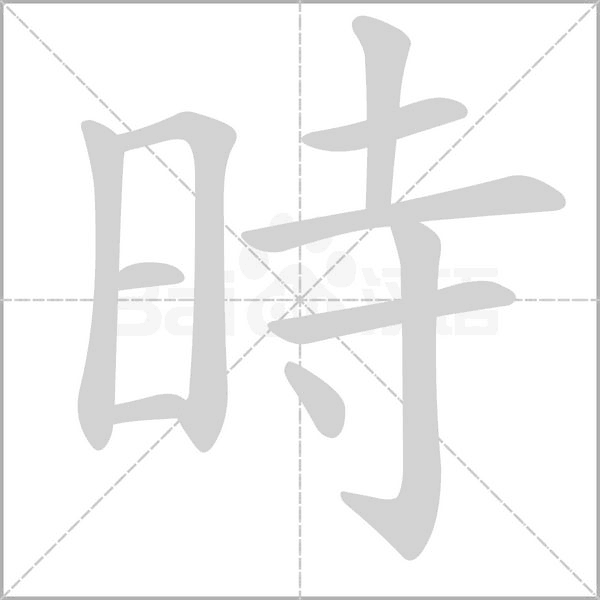
shí: time
radical: 日 (rì; sun)

Chinese Studies Classroom: In Oracle Bone Script, the character “時” (shí) is composed of “日” (rì, sun) at the bottom and “之” (zhī) at the top. “日” represents the sun, while “之” conveys the idea of movement and also serves as a phonetic component. Together, the two elements symbolize the movement of the sun. Ancient Chinese people measured time based on the sun’s position in the sky or its shadow on the ground. This character stands as a testament to how ancient Chinese civilization recorded time by observing the sun’s motion.
Simplified character:
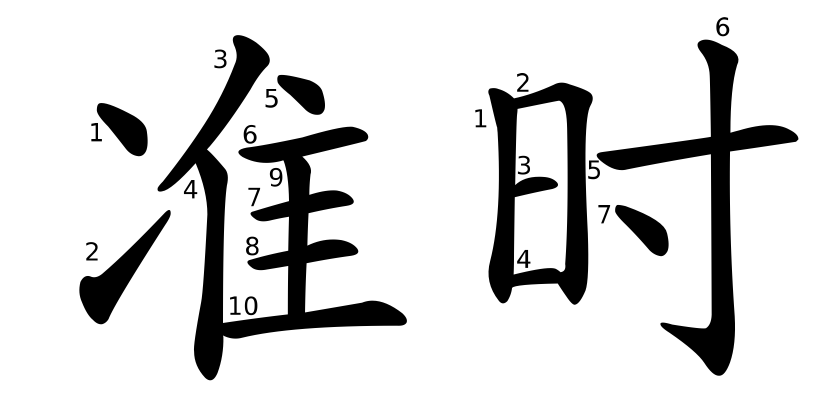
喝: hē; to drink
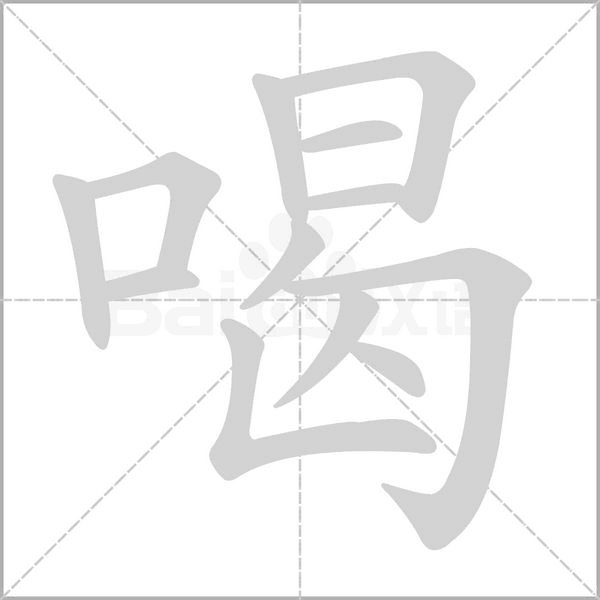
hē: to drink
radical: 口 (kǒu; mouth)

Both traditional and simplified characters are written like this.
咖啡: kāfēi; coffee
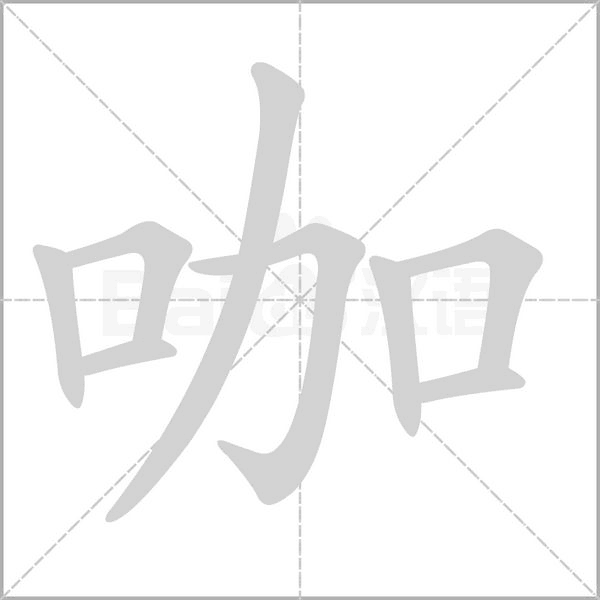
kā
radical: 口 (kǒu; mouth)

fēi
radical: 口 (kǒu; mouth)
Both traditional and simplified characters are written like this:

一點兒: yìdiǎnr; a bit; a little; small amount

yī: one
radical: 一
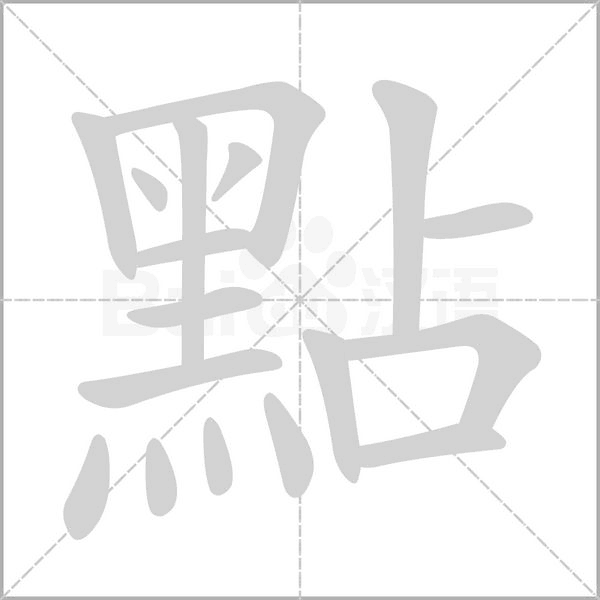
diǎn: drop (of liquid); spot; dot; speck; appointed time; tiny amount; a little
radical: 灬

Chinese Studies Classroom: The character “點” (diǎn) is a phono-semantic compound. On the left is the component “黑” (hēi, black), which, in Oracle Bone Script, depicts fire at the bottom and a chimney above. The meaning of “黑” originates from the black soot produced by smoke rising from the fire. The right side of “點” serves as the phonetic element, indicating that “占” (zhān) and “點” (diǎn) had similar pronunciations in ancient times. The original meaning of “點” referred to black marks created by soot. Over time, it extended to mean “dot,” “speck,” “tiny amount,” or “a little.”
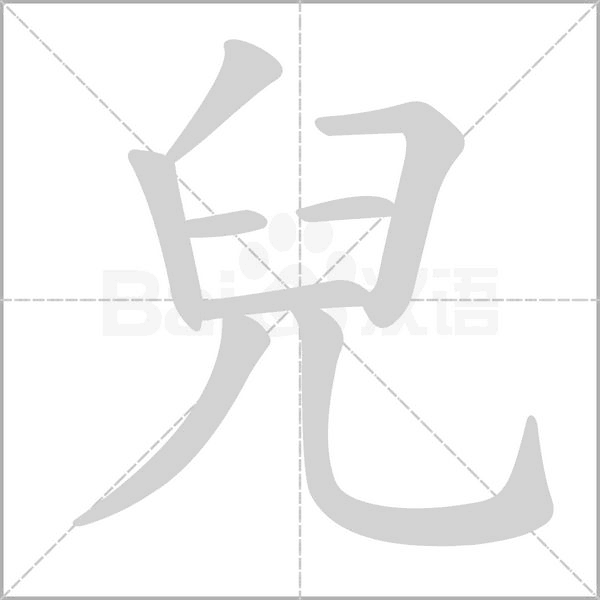
ér: a retroflex suffix
radical: 兒
Note that “兒” is an important retroflex suffix in Mandarin Chinese. In Mandarin Chinese, “érhuà” (the addition of the retroflex suffix “-r”) can add a sense of intimacy or diminutiveness to nouns. However, this usage is limited to certain specific words. For example, “画儿” (huàr) conveys a more casual or affectionate tone than “画” (huà), and “玩儿” (wánr) sounds more colloquial than “玩” (wán). In addition, “érhuà” can also change the meaning of certain words. For example: “哪” (nǎ; which) becomes “哪儿” (nǎr; where), and “那” (nà; that) becomes “那儿” (nàr; there).
Simplified character:

泡茶: pàochá; make tea
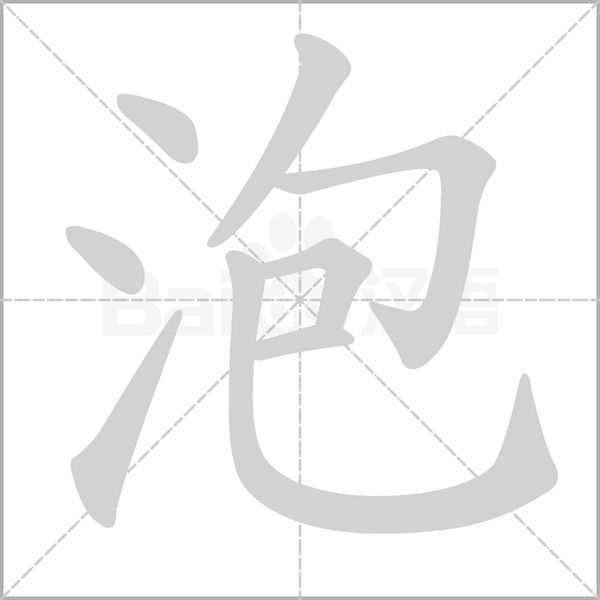
pào: steep; soak; bubble
radical: 氵(shuǐ; water)
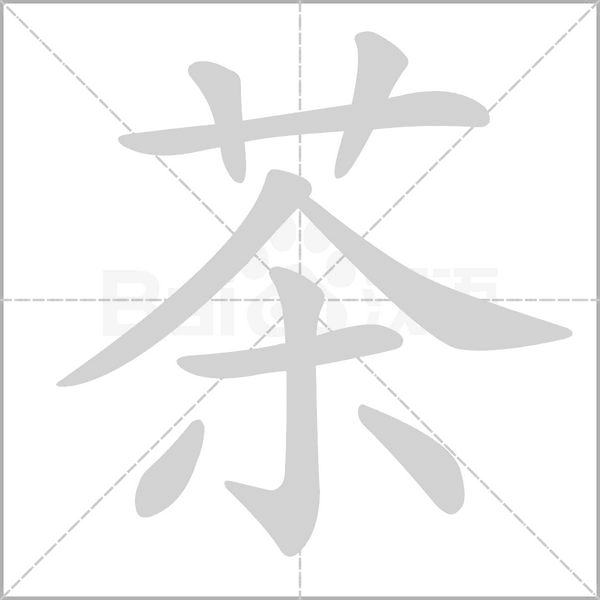
chá: tea
radical: 艹 (cǎo; grass or the general term for herbaceous plants)
Both traditional and simplified characters are written like this:
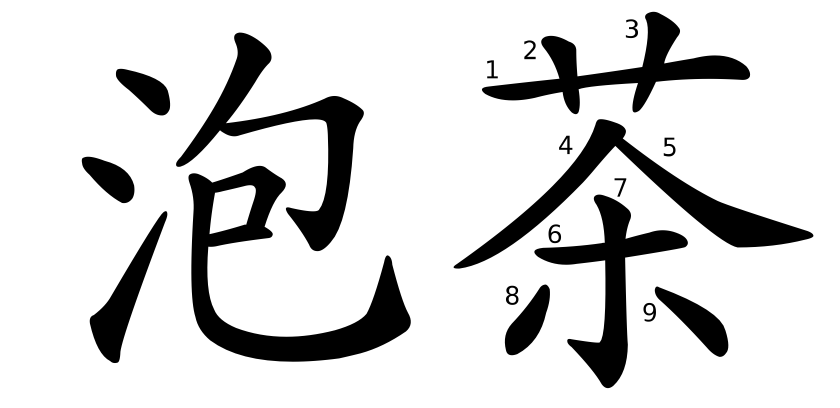
行: xíng; OK

xíng: OK
radical: 彳 (chì; the appearance of walking slowly)

Chinese Studies Classroom: In Oracle Bone Script, the character “行” resembles a crossroads, which was its original meaning. Later, it extended to signify walking, going ahead, accomplishing tasks, and other related concepts.

Both traditional and simplified characters are written like this.
請坐: qǐngzuò; Please have a seat

qǐng: plase; invite; request
radical: 言 (yán; language)
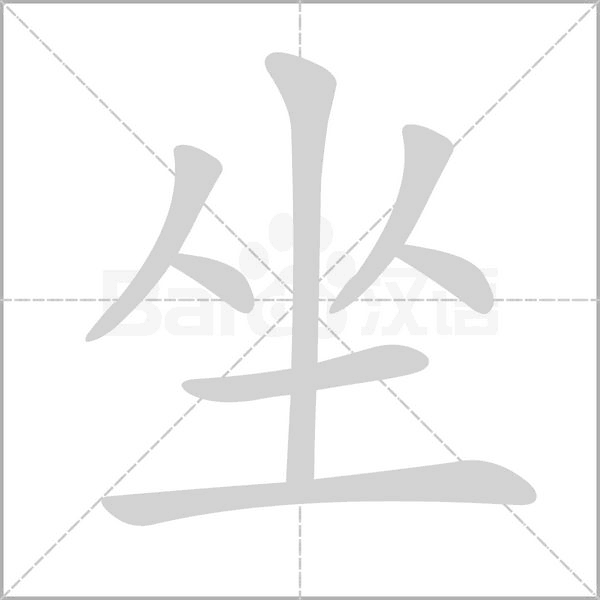
zuò: sit
radical: 土 (tǔ; soil; earth)
Simplified character:
